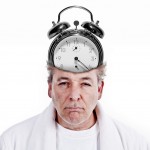
As people get older they tend to have more problems sleeping. Sometimes they are prescribed medication (hynoptic drugs) to help them sleep. Commonly used hynoptics are benzodiazepines and Z drugs (zopiclone, zolpidem, zaleplon).
Researchers from Australia have just published a systematic review of randomised controlled trials (ref 1) that evaluates the effectiveness of simple ‘minimal interventions’ to reduce or stop the long-term use of benzodiazepines in adults in primary care, compared to those allowed to continue on the usual dose.
Background
NICE guidance on insomnia (ref 2) advises that after non-drug therapies have been explored, hypnotics should be used in the lowest dose possible for no more than 4 weeks with benzodiazepines, or 2–4 weeks with Z drugs (zopiclone, zolpidem, zaleplon). NICE guidance on generalised anxiety disorder in adults (ref 3) recommends that benzodiazepines are not offered for the treatment of generalised anxiety disorder in primary or secondary care except as a short-term measure during crises.
A meta-analysis from 2000 by Holbrook et al (ref 4) showed that benzodiazepines and zopiclone don’t reduce the time it takes to get to sleep, but they do increase sleep duration by about an hour.
Another meta analysis from 2005 by Glass et al (ref 5) highlighted the adverse effects that are common in hypnotic drugs:
- Cognitive effects (effects on the ability to think or concentrate)
- Psychomotor effects (balance or gait)
- Morning or daytime fatigue
Long-term users of benzodiazepines may have been taking them for years and may be heavily dependent on them. They may have no wish to change, and indeed would find it extremely difficult to stop taking these drugs. However, there are many who can be readily encouraged to change.
The new study
While simple measures such as a letter to patients from their GP advising them to reduce or stop taking hypnotics can be effective for some, more resource-intensive interventions such as cognitive behavioural therapy (CBT) may be required for others. This study was a systematic review of three RCTs that compared the effectiveness of simple ‘minimal interventions’ to reduce or stop the long-term use of benzodiazepines in adults in primary care, versus allowing patients to continue on their usual dose, over a period of six months.
‘Minimal interventions’ were defined as a letter, self-help information, or short consultation with a GP. These explained:
- concern over the patient’s long-term use of hypnotics;
- their potential side effects; and
- advice for patients to gradually reduce or cease their benzodiazepine, with less likelihood of withdrawal symptoms.
Here’s what the review found:
- All three RCTs (615 patients, mean age >60 years) that were included in the systematic review, reported reductions in benzodiazepine consumption in the ‘minimal intervention’ group compared to control groups, over a follow-up period of six months
- The pooled risk ratio (RR) showed twice the reduction in benzodiazepine use in the ‘minimal intervention’ groups (either letter or letter and short consultation groups) compared to those on usual care (RR 2.04, 95% confidence interval [CI] 1.48 to 2.83, P<0.001)
- In the pooled analysis of cessation of benzodiazepine use, the ‘minimal intervention groups’ were associated with twice the rate of cessation of the usual care group (RR 2.31, 95%CI 1.29 to 4.17, P=0.003)
- The reviewers calculated that for tailored letters the ‘number needed to post’ is about 12 for one additional person to stop using benzodiazepines at six months
Links
- Mugunthan K, McGuire T, Glasziou P. Minimal interventions to decrease long-term use of benzodiazepines in primary care: a systematic review and meta-analysis. Br J Gen Pract 2011; DOI: 10.3399/bjgp11X593857.
- Guidance on the use of zaleplon, zolpidem and zopiclone for the short-term management of insomnia (PDF). NICE Technology Appraisal 77, April 2004.
- Generalised anxiety disorder in adults: management in primary, secondary and community care (PDF). NICE Clinical Guideline 113, 11 Oct 2011.
- Holbrook AM, Crowther R, Lotter A, Cheng C, King D. Meta-analysis of benzodiazepine use in the treatment of insomnia. CMAJ. 2000 Jan 25;162(2):225-33.
- Glass J, Lanctôt KL, Herrmann N, Sproule BA, Busto UE. Sedative hypnotics in older people with insomnia: meta-analysis of risks and benefits. BMJ. 2005 Nov 19;331(7526):1169. Epub 2005 Nov 11.
- Online Workshop on Insomnia (60 minute e-learning event). National Prescribing Centre, Mar 2010.

It would be helpful for the researcher to write the definition of his /her/their main topic on hypnotic drugs – the long ‘b’ word and the ‘z’ word. The article was well written but from a non-doctor perspective I am still left wondering what the article really covered – yes hypnotic drugs, but we need information about which ones. Age group is defined, so drugs should be too. I see NICE, BMJ, and CMAJ and the National Prescribing Centre are involved, but no user groups, or carers. Could be helpful to include one or two references to real people affected. Also, Randomised Controlled Trials should be spelled out. People do not know what these are, and who funds them. Are there any comparatives for example.